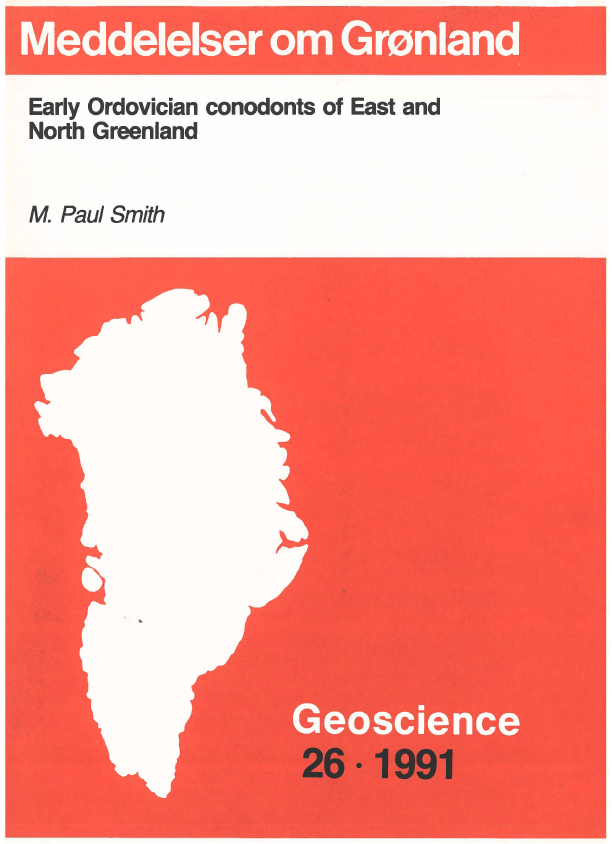Early Ordovician conodonts of East and North Greenland
DOI:
https://doi.org/10.7146/moggeosci.v26i.140196Abstract
Conodonts of middle to late Canadian (Early Ordovician) age are described from the Cape Weber Formation of Ella Ø, East Greenland, from the Danmarks Fjord and Amdrup Members (Wandel Valley Formation) of Kronprins Christian Land, eastern North Greenland, and the Pyramide plateau Member (Wandel Valley Formation) of Peary Land, central North Greenland. A total of 33 genera and 73 species are systematically described and of these, four new genera (Aloxoconus , Chionoconus, Toxotodus and Wandelia) and eight new species (Chionoconus avangna, Eucharodus, "Oistodus" ectyphus, Scalpellodus? narhvalensis, "Scandodus" ethingtoni, Toxotodus amphigyus, Wandelia guyi and W. candidisphaera) are recognised. The faunas are coniform-dominated and typical of shallow water Midcontinent Real mass emblages found throughout most of North America.
The conodont faunas from the Cape Weber Formation on Ella Ø are referred to three biozones: the manitouensis Biozone , Fauna D and the communis Biozone. Those from the lower members of the Wandel Valley Formation are representative of upper most Fauna D and the communis Biozone. There is a discussion of potential zonal and sub zonal schemes for deep and shallow-water biofacies.
Fused clusters of Oepikodus communis (Ethington & Clark) and Parapanderodus striatus (Graves & Ellison) are described from the Cape Weber Formation and are amongst the oldest euconodont natural assemblages recorded . Their implications interms of apparatus reconstruction and architecture are discussed.

Downloads
Published
How to Cite
Issue
Section
License
Coypyright by the authors and the Commision for Scientific Research in Greenland / Danish Polar Center. No parts of the publications may be reproduced in any form without the written permission by the copyright owners.

